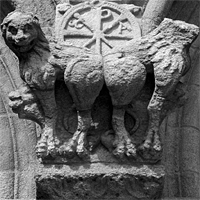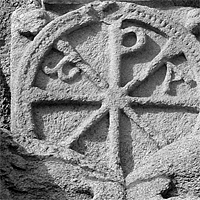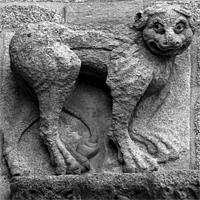























Middle Ages Architectural Sculpture and its Position in an Architectural
Context
Traditional text-based descriptions or depictions of architectural sculpture often fail to provide the necessary precision in respect of location and internal references. The material is necessarily somewhat selective; often the criteria have to be retraced in great detail. With HyperImage, a visualisation concept has been implemented that links imaging, the architectural surroundings and information. Such a presentation does significantly more justice to the three-dimensional character of architecture than the standard book form. The aim of the project is to visualise, localise and explore in detail architectural sculpture in its respective architectural surroundings using ground plans, elevations and cross-sections of buildings in the form of a web-based online publication. Related images and information such as a description of the object, its iconography and dating are also to be linked.
The prototype, which is to be transferred to other objects, is being developed based on the Puerta de las Plateria, the southern portal of the cathedral of Santiago de Compostela, Spain. Alongside Rome and Jerusalem, Santiago de Compostela was one of the three most significant Christian destinations for pilgrims in the Middle Ages. From the time it was built, the cathedral has been unusually rich in architectural sculpture, primarily thanks to its capitals and the portal designs that date from the early 12th century. It was precisely this visualisation of the Puerta de las Platerias, a portal which has undergone numerous changes over the centuries, that has presented pioneering perspectives for research on the early phases of construction and its architectural sculptures. Thus, the Book of St. James (the Codex Calixtinus) from the 12th century, a manuscript housed in the cathedral’s archives in Santiago, reports of three portals (the north, south and west portals) The only remaining portal, however, is the south portal, the Puerta de las Platerias. Given the descriptions of the portals in the Codex Calixtinus and other sources, we have known for some time that part of the Roman sculptures from the former north portal and the planned west portal, that was never erected (i.e. the predecessor of the Pórtico de la Gloria), is mounted today on the south portal. With the help of HyperImage, sculptures mentioned in the Codex Calixtinus which are partially intact today can be grouped and graphically illustrated on light tables. At the same time, records of architectural sculptures can be sorted according to style. Such a wide variety of grouping and visualisation options are the starting point to identify and record new interconnected references to the sculptures and portals.
Project Director: Prof. Dr. Claudia Rückert
Department of Art History, Humboldt University, Berlin
Dorotheenstraße 28, D - 10117 Berlin
Phone +49 (0)30 2093 4057 | Fax +49 (0)30 2093 4209
claudia.rueckert@culture.hu-berlin.de
Contents:Kathleen Waak, Vera Kern